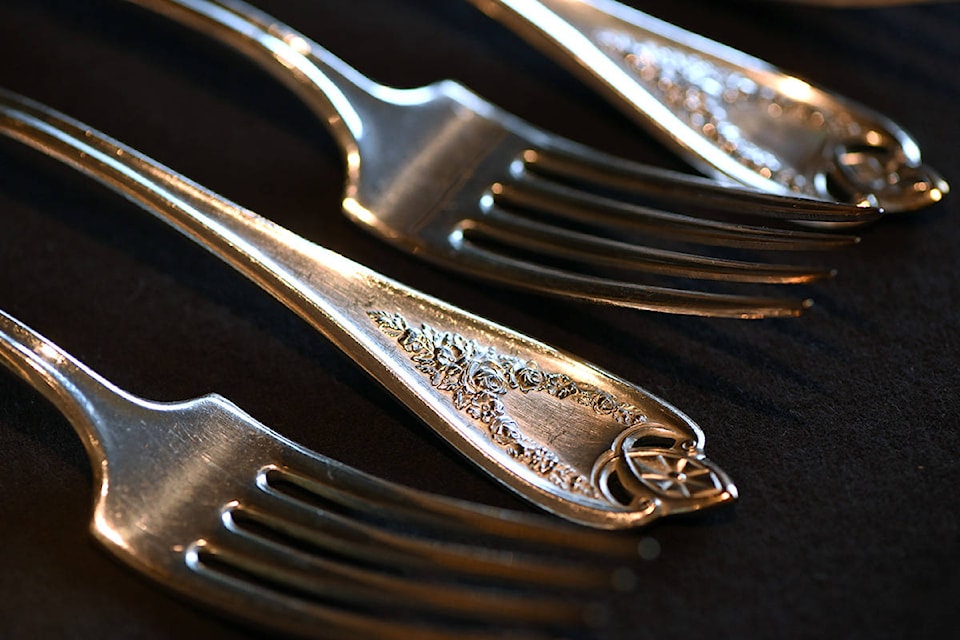A good measure of an exceptional meal is not simply a variety of locally grown ingredients and the ingenious mix of textures, colours, flavours and aromas — although these are essential factors. But also important is the silverware with which the food is eaten.
Utensils — their weight, balance and design — on the table can either enhance or detract from the genius of the cook and beauty of the plates and platters.
Back in 1911, a new and unique pattern of cutlery was introduced to the world of culinary arts for the tables of early 20th century North America. 1847 Rogers Bros of the International Silver Co. from Meriden, Connecticut — known as “The World’s Largest Makers of Sterling Silver and Plate” — brought to homes across the nation “Old Colony 1911.” This distinctive silverware pattern matched the distinguished tables of the middle class and upper class societies.
In the summer of 1981, I found myself on a journey of marriage separation, setting out to establish a new life on my own. I drove west into the foothills of the Rockies to be with my parents. There I found the consolation and encouragement I was seeking. But also, I needed to obtain household items — including kitchen cutlery.
My father was working part-time for an auction house. He invited me to join him one morning on one of his assignments where he was preparing items of an estate for an auction sale. Among the items spread out on tables for cataloguing and setting out in auction lots were various boxes of cutlery. He suggested that if I needed any cutlery, I could peruse what was on the table and choose what I liked most.
After thumbing through the collection of various pieces, and looking at pattern, weight and balance, I chose four each of teaspoons, forks and knives that all matched. At the time, I did not know what I had chosen, but a few years later, after some silverware research, I discovered that the pattern was none other than Old Colony 1911. I had chosen, rather incidentally and accidentally, a silverware of some distinction, and I set out on the path of discovery into the world of culinary history.
| David A. Spence looks over a cake lifter, one of the the pieces of silverware in his collection. Don Denton photograph |
Wherever I travelled in subsequent years, I sought out antique stores and inquired about the silverware in their display cases. In particular, I asked whether or not they had any Old Colony pieces. On some occasions, I was successful; on other occasions, I was not lucky at all. But every venture of inquiry was enlightening and enjoyable as I discovered what possibilities existed in the world of relics and artifacts.
One of those possibilities was a chance meeting with Marie Refusse, the owner of Silver Service and an expert entrepreneur of silverware. Her display drawers had the usual place settings of knives, forks and spoons in various sizes and designs. But even more fascinating, were her unusual pieces that included potato forks, marrow spoons, tomato servers, ladles, as well as a few pieces of utensils for infants.
Some pieces were three times silver dipped; others were only single dipped. Then there were those pieces that had a little extra design on the backside where the fork or spoon would rest on the table. This minute bit of extra design and silver, usually in the shape of the marijuana leaf, was intended to provide extra strength and extra body so it would not show any obvious signs of wearing out from regular use.
The adventurous process led me to seek out a proper cabinet in which to house the 200 or so pieces I’d collected over the years. A common chest wouldn’t do, so after considerable deliberation, I chose an antique filing cabinet that had two rows of 12 drawers. It provided ample space for each piece to have a “home-in-the-drawer” for itself, including all the unusual serving pieces. I also selected a piece of felt fabric to wrap around a few pieces at a time to prevent — or at least delay — tarnishing of the silver pieces in the collection.
| Examples of Old Colony 1911 silverware collected by David A. Spence. Don Denton photograph |
The only pieces of Old Colony that I continue to seek are the serving dishes and the hollow ware of tea and coffee pots.
Occasionally, when conversation enters a lull, I try to imagine who might have used these utensils before us. What were their occupations and their economic capabilities? What were their relationships with others gathered around the table? What would have been the blessing or grace used before the meal began? What other stories could they tell about the people whose hands and fingers wrapped around the handles of each spoon or fork or knife?
Silverware, the table utensils used for people to enjoy their ordinary meals as well as their sumptuous feasts on special occasions, are indicative of social status, creative genius and each individual gathered around the table in the spirit of community. These simple tools which are valued for their dexterity and design are so often symbolic of the soul of who we are, how we are one with another, and what we aspire to be and do.
-Story by David A. Spence
Story courtesy of Boulevard Magazine, a Black Press Media publication
Like Boulevard Magazine on Facebook and follow them on Instagram



